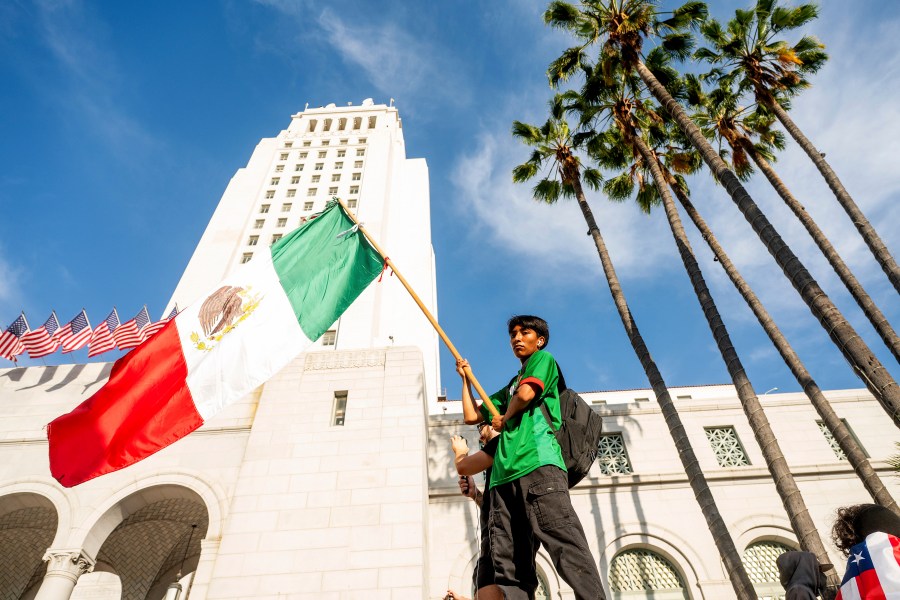The mass deportation of California’s undocumented residents could slash $275 billion from the state’s economy, eliminate $23 billion in annual tax revenue, and severely disrupt key industries such as agriculture, construction and hospitality, according to a new study released on Tuesday.
The report, published by the Bay Area Council Economic Institute in partnership with UC Merced public health professor Maria-Elena De Trinidad Young, outlines the sweeping economic consequences of increased federal immigration enforcement.
It finds that undocumented immigrants — who make up 8% of California’s workforce — are integral to the state’s $4.1 trillion economy, the fourth largest in the world.
“Immigrants, both documented and undocumented, are deeply and intricately woven into our overall economic fabric,” said study co-author Abby Raisz, research director for the Bay Area Council Economic Institute. “The impact of losing 8% of California’s workforce would have a crippling effect on the state economy. The impacts would extend far beyond California’s borders, with labor shortages contributing to higher food prices nationwide.”
The study draws on federal data, economic modeling, and nearly 40 interviews with business leaders, elected officials, and community advocates across the state.
Here are some of the report’s key findings.
- Undocumented workers generate nearly 5% of the state’s gross domestic product — a number that climbs to 9% when factoring in indirect impacts.
- The average undocumented resident contributes roughly $7,000 in state, local, and federal taxes annually.
- Immigrants own about 40% of small businesses in California, with undocumented individuals accounting for roughly 11% of those. These businesses generate local revenue and provide essential goods and services to the communities they serve.
The study identifies geographic areas most vulnerable to economic shocks from mass deportation, including the San Joaquin Valley, the Inland Empire, the San Francisco Bay Area, and the Los Angeles area.
In agriculture alone, 63% of the workforce are immigrants, and more than one-quarter are undocumented. The report projects that deporting these workers could shrink the sector’s GDP by 14%.
Similarly, undocumented immigrants make up 14% of California’s construction workforce. Their removal would cause that industry’s GDP to drop by 16%.
Young said the human impact is just as important as the financial toll. “California has a long and rich history of embracing immigrants,” she said. “Understanding how enforcement affects families and communities is critical for creating policies that support economic stability and human dignity.”
The report comes amid stepped-up immigration enforcement by President Trump’s administration.
ICE raids in Southern California cities prompted more than a week of large-scale protests across the region, some of which turned violent, leading to more than 500 arrests in L.A.
Los Angeles Mayor Karen Bass previously announced a curfew in a single square mile of downtown, an area bounded by the 5, 10, and 110 Freeways. That curfew was lifted on Tuesday.
Last Saturday, one of the most popular swap meets in all of L.A. County was raided by some 60 heavily armed federal agents in tactical gear, their appearance sending customers and vendors running in some cases.
The report noted that undocumented residents in California are predominantly long-term community members. Nearly two-thirds have lived in the state for more than a decade, and nearly half have been there for over 20 years. Many have U.S.-born children and own homes.
“The vulnerability of undocumented and other noncitizen workers to potential immigration enforcement actions has widespread implications for businesses, industries, and the state as a whole,” the report noted.
The study calls for comprehensive federal immigration reform, arguing that legal protections and workforce certainty would benefit not only immigrant families but also the businesses and industries that rely on their labor.
The full report is available here.
